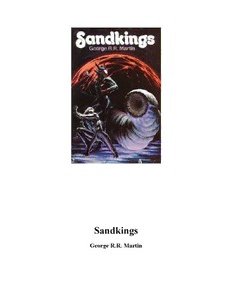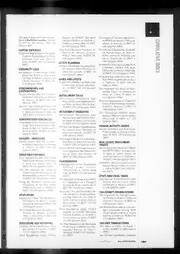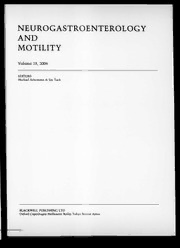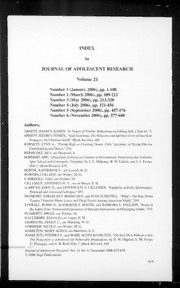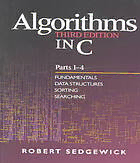
Algorithms in C, Parts 1-4: Fundamentals, Data Structures, Sorting, Searching PDF
Preview Algorithms in C, Parts 1-4: Fundamentals, Data Structures, Sorting, Searching
Algorithms THIRD EDITION C in ( I t PARTS 1-4 ~ i' \ FUNDAMENTALS I DATA STRUCTURES ·1 SORTING SEARCHING . I Robert Sedgewick , Princeton University .... TT ADDISON-WESLEY Boston • San Francisco • New York • Toronto • Montreal London • Munich • Paris • Madrid Capetown • Sydney • Tokyo • Singapore • Mexico City Publishing Partner: Peter S. Gordon Associate Editor: Deborah Lafferty Cover Designer: Andre Kuzniarek Production Editor: Amy Willcutt Copy Editor: Lyn Dupre The programs and applications presented in this book have been in cluded for their instructional value. They have been tested with care, but are not guaranteed for any particular purpose. The publisher nei ther offers any warranties or representations, nor accepts any liabilities with respect to the programs or applications. Library of Congress Cataloging-in-Publication Data Sedgewick, Robert, 1946 Algorithms in C / Robert Sedgewick. - 3d ed. 720 p. 24 cm. Includes bibliographical references and index. Contents: v. 1, pts. 1-4. Fundamentals, data structures, sorting, searching. ISBN 0-201-31452-5 1. C (Computer program language) 2. Computer algorithms. I. Title. QA76.73.C15S43 1998 005.13'3-dc21 97-23418 CIP Reproduced by Addison-Wesley from camera-ready copy supplied by the author. Copyright © 1998 by Addison-Wesley Publishing Company, Inc. All rights reserved. No part of this publication may be reproduced, stored in a retrieval system, or transmitted, in any form or by any means, electronic, mechanical, photocopying, recording, or otherwise, without the prior written permission of the publisher. Printed in the United States of America. Text printed on recycled and acid-free paper. ISBN 0201314525 141516171819 CRS 080706 14th Printing January 2006 Preface T HIS BOOK IS intended to survey the most important computer algorithms in use today, and to teach fundamental techniques to the growing number of people in need of knowing them. It can be used as a textbook for a second, third, or fourth course in computer science, after students have acquired basic programming skills and fa miliarity with computer systems, but before they have taken specialized courses in advanced areas of computer science or computer applica tions. The book also may be useful for self-study or as a reference for 'people engaged in the development of computer systems or applica tions programs, since it contains implementations of useful algorithms and detailed information on these algorithms' performance character istics. The broad perspective taken makes the book an appropriate introduction to the field. I have completely rewritten the text for this new edition, and I have added more than a thousand new exercises, more than a hundred new figures, and dozens of new programs. I have also added detailed commentary on all the figures and programs. This new material pro vides both coverage of new topics and fuller explanations of many of the classic algorithms. A new emphasis on abstract data types through out the book makes the programs more broadly useful and relevant in modern object-oriented programming environments. People who have read old editions of the book will find a wealth of new information throughout; all readers will find a wealth of pedagogical material that provides effective access to essential concepts. Due to the large amount of new material, we have split the new edition into two volumes (each about the size of the old edition) of which this is the first. This volume covers fundamental concepts, data structures, sorting algorithms, and searching algorithms; the second volume covers advanced algorithms and applications, building on the basic abstractions and methods developed here. Nearly all the material on fundamentals and data structures in this edition is new. PREFACE This book is not just for programmers and computer-science stu dents. Nearly everyone who uses a computer wants it to run faster or to solve larger problems. The algorithms in this book represent a body of knowledge developed over the last 50 years that has be come indispensible in the efficient use of the computer, for a broad variety of applications. From N -body simulation problems in physics to genetic-sequencing problems in molecular biology, the basic meth ods described here have become essential in scientific research; and from database systems to Internet search engines, they have become essential parts of modern software systems. As the scope of computer applications becomes more widespread, so grows the impact of many of the basic methods covered here. The goal of this book is to serve as a resource for students and professionals interested in knowing and making intelligent use of these fundamental algorithms as basic tools for whatever computer application they might undertake. Scope The book contains 16 chapters grouped into four major parts: funda mentals, data structures, sorting, and searching. The descriptions here are intended to give readers an understanding of the basic properties of as broad a range of fundamental algorithms as possible. Ingenious methods ranging from binomial queues to patricia tries are described, all related to basic paradigms at the heart of computer science. The second volume consists of four additional parts that cover strings, ge ometry, graphs, and advanced topics. My primary goal in developing these books has been to bring together the fundamental methods from these diverse areas, to provide access to the best methods known for solving problems by computer. You will most appreciate the material in this book ifyou have had one or two previous courses in computer science or have had equivalent programming experience: one course in programming in a high-level language such as C, Java, or C++, and perhaps another course that teaches fundamental concepts of programming systems. This book is thus intended for anyone conversant with a modern programming language and with the basic features of modern computer systems. References that might help to fill in gaps in your background are suggested in the text. iv Most of the mathematical material supporting the analytic results is self-contained (or is labeled as beyond the scope of this book), so little specific preparation in mathematics is required for the bulk of the book, although mathematical maturity is definitely helpful. Use in the Curriculum There is a great deal of flexibility in how the material here can be taught, depending on the taste of the instructor and the preparation of the students. The algorithms described here have found widespread use for years, and represent an essential body of knowledge for both the practicing programmer and the computer-science student. There is sufficient coverage of basic material for the book to be used for a course on data structures, and there is sufficient detail and coverage of advanced material for the book to be used for a course on algorithms. Some instructors may wish to emphasize implementations and prac tical concerns; others may wish to emphasize analysis and theoretical concepts. A complete set of slide masters for use in lectures, sample pro gramming assignments, interactive exercises for students, and other course materials may be found via the book's home page. An elementary course on data structures and algorithms might emphasize the basic data structures in Part 2 and their use in the implementations in Parts 3 and 4. A course on design and analysis of algorithms might emphasize the fundamental material in Part 1 and Chapter 5, then study the ways in which the algorithms in Parts 3 and 4 achieve good asymptotic performance. A course on software engineering might omit the mathematical and advanced algorithmic material, and emphasize how to integrate the implementations given here into large programs or systems. A course on algorithms might take a survey approach and introduce concepts from all these areas. Earlier editions of this book have been used in recent years at scores of colleges and universities around the world as a text for the second or third course in computer science and as supplemental reading for other courses. At Princeton, our experience has been that the breadth of coverage of material in this book provides our majors with an introduction to computer science that can be expanded upon in later courses on analysis of algorithms, systems programming and v PREFACE theoretical computer science, while providing the growing group of students from other disciplines with a large set of techniques that these people can immediately put to good use. The exercises-most of which are new to this edition-fall into several types. Some are intended to test understanding of material in the text, and simply ask readers to work through an example or to apply concepts described in the text. Others involve implementing and putting together the algorithms, or running empirical studies to compare variants of the algorithms and to learn their properties. Still others are a repository for important information at a level of detail that is not appropriate for the text. Reading and thinking about the exercises will pay dividends for every reader. Algorithms of Practical Use Anyone wanting to use a computer more effectively can use this book for reference or for self-study. People with programming experience can find information on specific topics throughout the book. To a large extent, you can read the individual chapters in the book independently of the others, although, in some cases, algorithms in one chapter make use of methods from a previous chapter. The orientation of the book is to study algorithms likely to be of practical use. The book provides information about the tools of the trade to the point that readers can confidently implement, debug, and put to work algorithms to solve a problem or to provide functionality in an application. Full implementations of the methods discussed are included, as are descriptions of the operations of these programs on a consistent set of examples. Because we work with real code, rather than write pseudo-code, the programs can be put to practical use quickly. Program listings are available from the book's home page. Indeed, one practical application of the algorithms has been to produce the hundreds of figures throughout the book. Many algo rithms are brought to light on an intuitive level through the visual dimension provided by these figures. Characteristics of the algorithms and of the situations in which they might be useful are discussed in detail. Although not emphasized, connections to the analysis of algorithms and theoretical computer science are developed in context. \Vhen appropriate, empirical and vi analytic results are presented to illustrate why certain algorithms are preferred. When interesting, the relationship of the practical algo rithms being discussed to purely theoretical results is described. Spe cific information on performance characteristics of algorithms and im plementations is synthesized, encapsulated, and discussed throughout the book. Programming Language The programming language used for all of the implementations is C. Any particular language has advantages and disadvantages; we use C because it is widely available and provides the features needed for our implementations. The programs can be translated easily to other modern programming languages, since relatively few constructs are unique to C. We use standard C idioms when appropriate, but this book is not intended to be a reference work on C programming. There are many new programs in this edition, and many of the old ones have been reworked, primarily to make them more readily useful as abstract-data-type implementations. Extensive comparative empirical tests on the programs are discussed throughout the text. Previous editions of the book have presented basic programs in Pascal, C++, and Modula-3. This code is available through the book home page on the web; code for new programs and code in new languages such as Java will be added as appropriate. A goal of this book is to present the algorithms in as simple and direct a form as possible. The style is consistent whenever possible, so that programs that are similar look similar. For many of the algorithms in this book, the similarities hold regardless of the language: Quicksort is quicksort (to pick one prominent example), whether expressed in Algol-60, Basic, Fortran, Smalltalk, Ada, Pascal, C, PostScript, Java, or countless other programming languages and environments where it has proved to be an effective sorting method. We strive for elegant, compact, and portable implementations, but we take the point of view that efficiency matters, so we try to he aware of the performance characteristics of our code at all stages of development. Chapter 1 constitutes a detailed example of this approach to developing efficient C implementations of our algorithms, and sets the stage for the rest of the hook. VH PREFACE Acknowledgments Many people gave me helpful feedback on earlier versions of this book. In particular, hundreds of students at Princeton and Brown have suf fered through preliminary drafts over the years. Special thanks are due to Trina Avery and Tom Freeman for their help in producing the first edition; to Janet Incerpi for her creativity and ingenuity in persuading our early and primitive digital computerized typesetting hardware and software to produce the first edition; to Marc Brown for his part in the algorithm visualization research that was the genesis of so many of the figures in the book; and to Dave Hanson for his willingness to an swer all of my questions about C. I would also like to thank the many readers who have provided me with detailed comments about various editions, including Guy Almes, Jon Bentley, Marc Brown, Jay Gischer, Allan Heydon, Kennedy Lemke, Udi Manber, Dana Richards, John Reif, M. Rosenfeld, Stephen Seidman, Michael Quinn, and William Ward. To produce this new edition, I have had the pleasure of working with Peter Gordon and Debbie Lafferty at Addison-Wesley, who have patiently shepherded this project as it has evolved from a standard update to a massive rewrite. It has also been my pleasure to work with several other members of the professional staff at Addison-Wesley. The nature of this project made the book a somewhat unusual challenge for many of them, and I much appreciate their forbearance. I have gained two new mentors in writing this book, and partic ularly want to express my appreciation to them. First, Steve Summit carefully checked early versions of the manuscript on a technical level, and provided me with literally thousands of detailed comments, partic ularly on the programs. Steve clearly understood my goal of providing elegant, efficient, and effective implementations, and his comments not only helped me to provide a measure of consistency across the imple mentations, but also helped me to improve many of them substantially. Second, Lyn Dupre also provided me with thousands of detailed com ments on the manuscript, which were invaluable in helping me not only to correct and avoid grammatical errors, but also-more important to find a consistent and coherent writing style that helps bind together the daunting mass of technical material here. I am extremely grateful vtt! for the opportunity to learn from Steve and Lyn-their input was vital in the development of this book. Much of what I have written here I have learned from the teaching and writings of Don Knuth, my advisor at Stanford. Although Don had no direct influence on this work, his presence may be felt in the book, for it was he who put the study of algorithms on the scientific footing that makes a work such as this possible. My friend and colleague Philippe Flajolet, who has been a major force in the development of the analysis of algorithms as a mature research area, has had a similar influence on this work. I am deeply thankful for the support of Princeton University, Brown University, and the Institut National de Recherce en Informa tique et Automatique (INRIA), where I did most of the work on the book; and of the Institute for Defense Analyses and the Xerox Palo Alto Research Center, where I did some work on the book while visit ing. Many parts of the book are dependent on research that has been generously supported by the National Science Foundation and the Of fice of Naval Research. Finally, I thank Bill Bowen, Aaron Lemonick, and Neil Rudenstine for their support in building an academic envi ronment at Princeton in which I was able to prepare this book, despite my numerous other responsibilities. Robert Sedgewick Marly-le-Roi, France, February, 1983 Princeton, New Jersey, January, 1990 Jamestown, Rhode Island, August, 1997 ix
The list of books you might like

The 48 Laws of Power

Can’t Hurt Me: Master Your Mind and Defy the Odds

The Spanish Love Deception

A Thousand Boy Kisses
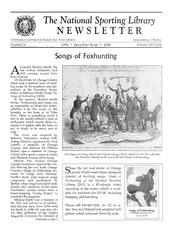
NSLM Newsletter - Winter 2006

ES 4755: GENERAL REQUIREMENTS FOR SAFETY OF LAMP CONTROL GEAR
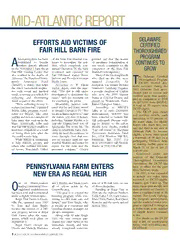
Mid-Atlantic Thoroughbred January 2006

O Egito Antigo
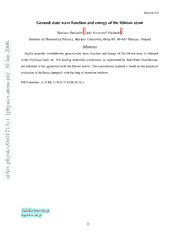
Ground state wave function and energy of the lithium atom

UFO Newsclipping Service 2006 04 no 441

Econometría Aplicada II

Afkondigingsblad van Aruba 2006 no. 51
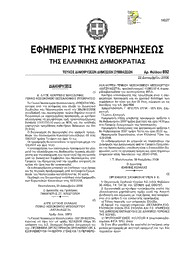
Greek Government Gazette: Part 7, 2006 no. 892

PHILOSOPHY OF RELIGION
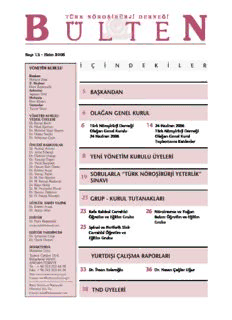
Bülten No 13 - Ekim 2006

Building to Impact: The 5D Implementation Playbook for Educators
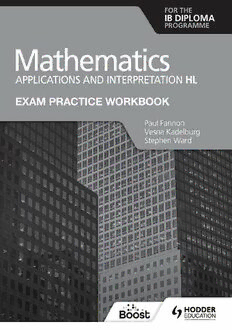
Exam Practice Workbook for Mathematics for the IB Diploma: Applications and interpretation HL
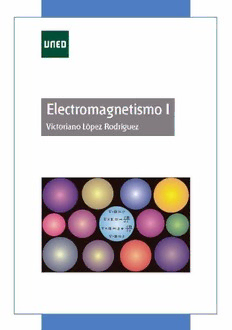
Electromagnetismo I

NASA Technical Reports Server (NTRS) 20080006488: Optically Thin Liquid Water Clouds: Their Importance and Our Challenge

A new species of Oncocephalus (Heteroptera, Reduviidae, Stenopodainae) from Japan
